2543 people reached on Lassi with Lavina FB page – 123 engagements
Rajendran Po, Rajni Menon and 2 others like it on Lassi with Lavina FB page
393 views on Linkedin – 6 Likes
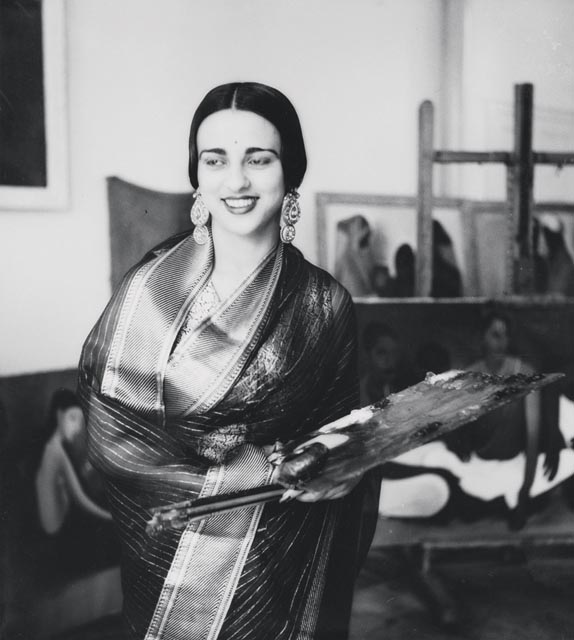
DAG: India’s French Connection – Love Affair of the Art
From Amrita Sher-Gil to Raza to Nalini Malani – The Lure Of Paris
[dropcap]T[/dropcap]he casual browser of Indian art may not know this but Indian modern art has a definite strong French connection. It’s hard to believe but over a hundred Indian artists have called Paris home, studied at various French institutions and made their life far from the heat and dust of India. These include such iconic names as S. H. Raza, Sakti Burman, Ram Kumar, Akbar Padamse, Jehangir Sabavala, Anjolie Ela Menon, Nalini Malani, Laxman Pai, Zarina Hashmi, Krishna Reddy, Sunil Das and so many more.
DAG Gallery which has its satellite gallery in New York, has brought in a thought-provoking show which traces the French journey of these noted Indian artists. How much did these artists learn from France and how much did they in turn contribute to France? Did they ever become Indian-French as we talk of Indian-Americans?
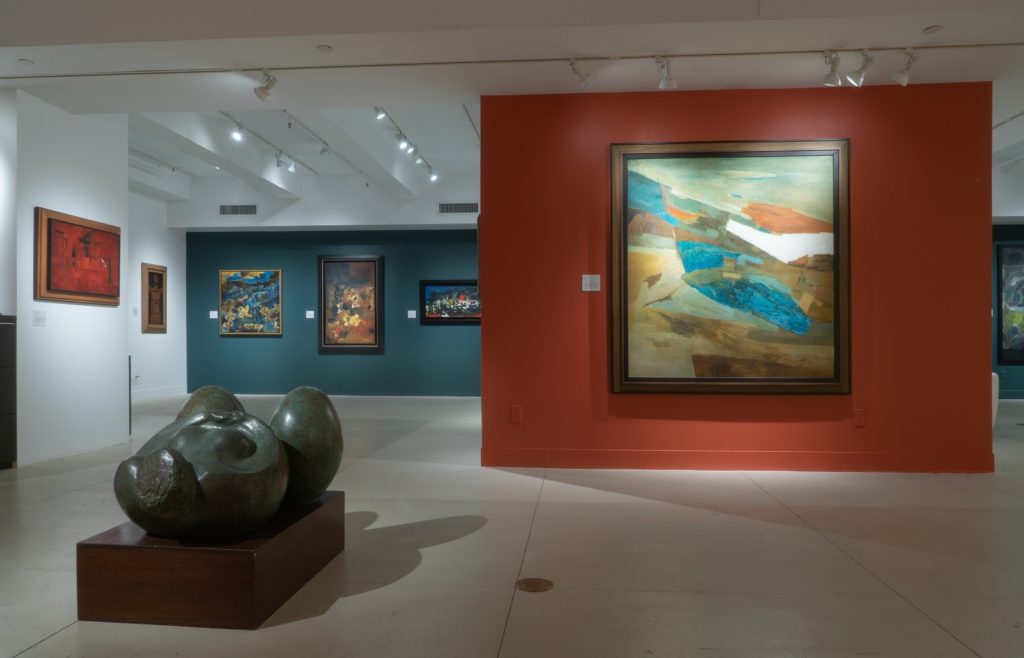
[dropcap]T[/dropcap]his gorgeous show is startling in its beauty, to some extent in its ‘foreignness’ to the untrained eye.
The first thing which greets you is ceiling to floor stunning black and white portraits of Amrita Sher-Gil and Ram Kumar, taking you into a surreal world.
You know you’re in for a voyage of discovery.
Accompanying the exhibition is ‘India’s French Connection: Indian artists in France’ – a hefty catalog, a collection of essays, stories and images which reveals so many of the reasons and seasons behind the French influences of these artists, raising so many questions. Were the artists fully accepted or did they remain foreigners in a foreign land? Did the art of these artists last in France or has it been forgotten?
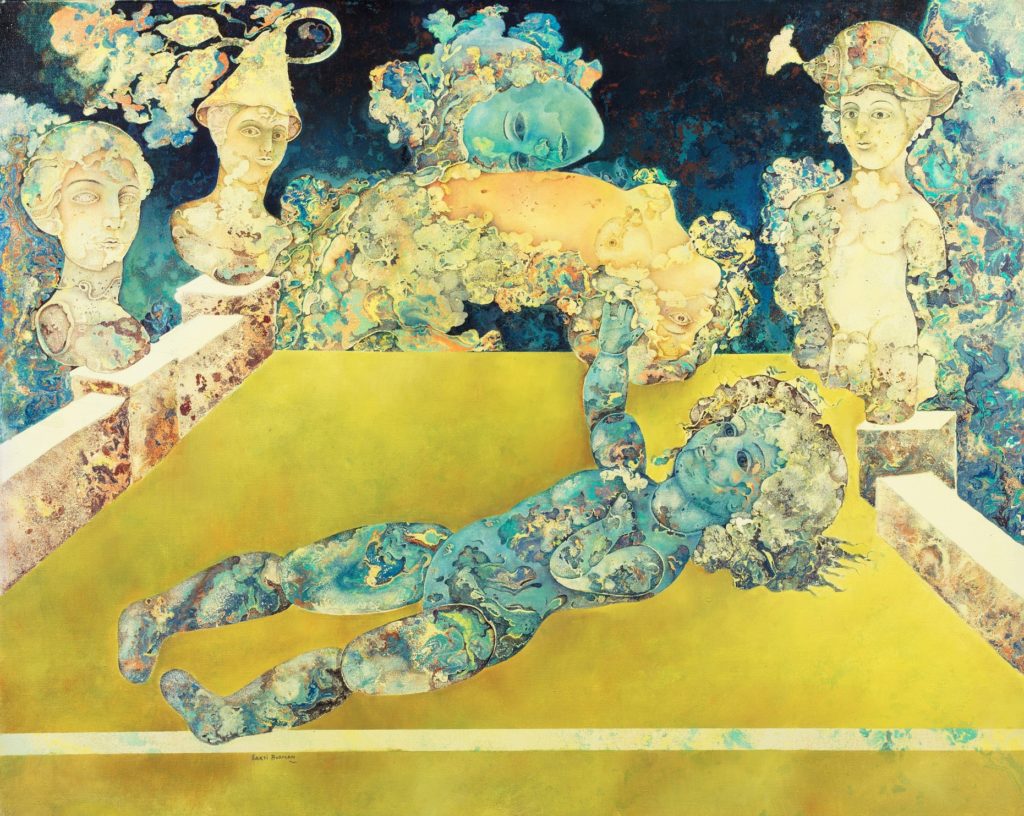
[dropcap]I[/dropcap]n his remarks in the catalog, Alexandre Ziegler, France’s ambassador to India points out that while many artists came to France in the 1960’s, Rabindranath’s nephew Gaganendranath Tagore was amongst the earliest modern artists in India, along with Abanindranath Tagore to exhibit as far back as 1914 at the societe des peintres orientalistes francois. Rabindrath Tagore himself showcased his first public and international exhibition at the Gallerie Pigalle in Paris in 1930. Amrita Sher-Gil also blended a post-Impressionist style with techniques from Indian miniature paintings. He writes, “Since then and until the end of the century, many important artists in India went to the Ecole Nationale des Beaux-Arts de Paris or other institutions, either on their own, but very often through grants and scholarships offered by the French government.”
He adds, “France on its part, respected their insights and inputs and acknowledged their presence, frequently through civilian honors for contributions to the arts.”
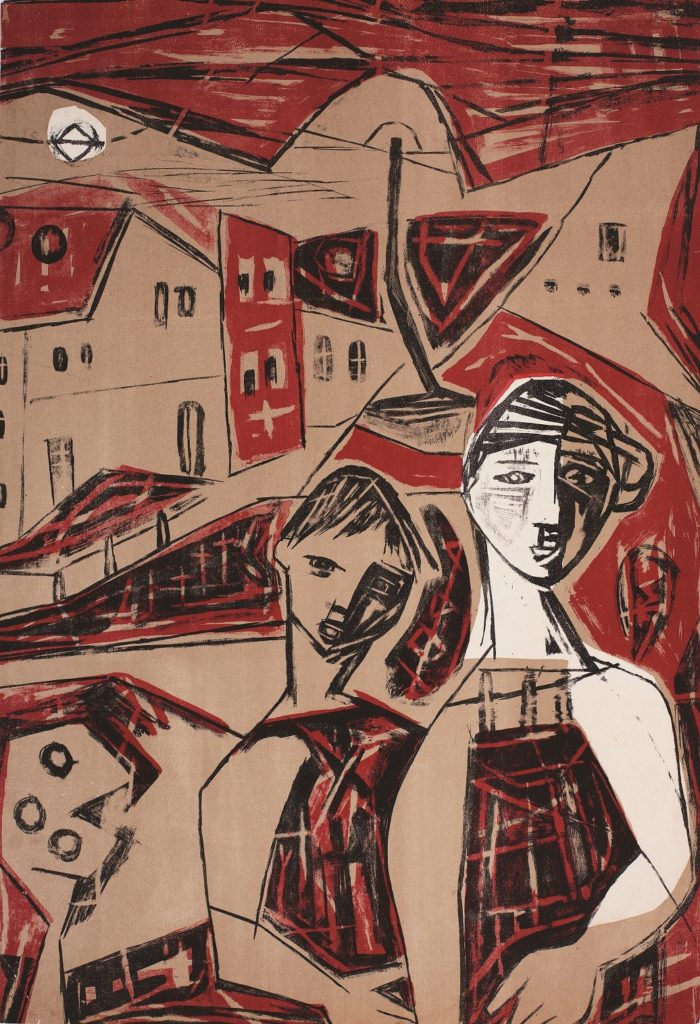
[dropcap]A[/dropcap]shish Anand of DAG Gallery notes that over one hundred artists from India had links with France – either as students or practicing artists but most people seem to recall only the names of Amrita Sher-Gil or S.H Raza who had won the Prix de la critique critics’award in 1956. As he points out there are several artists who lived or continue to live in France: “It is home to V. Viswanadhan and Sakti Burman; it was here that Rajendra Dhawan painted his abstract landscapes that are now gaining in popularity. Indeed, the French Government has recognized these efforts, honoring them with the Legion d’Honneur for Raza and Burman.”
An important step in this exhibition was that DAG worked with several institutions to make it a possibility, and included speakers from France, including Picasso’s grandson, Bernard Picasso. Says Anand, “Indian art has remained insular for too long. It needs to be viewed within a more international context. It is my hope that India’s French Connection: Indian Artists in France is a step in that direction.”
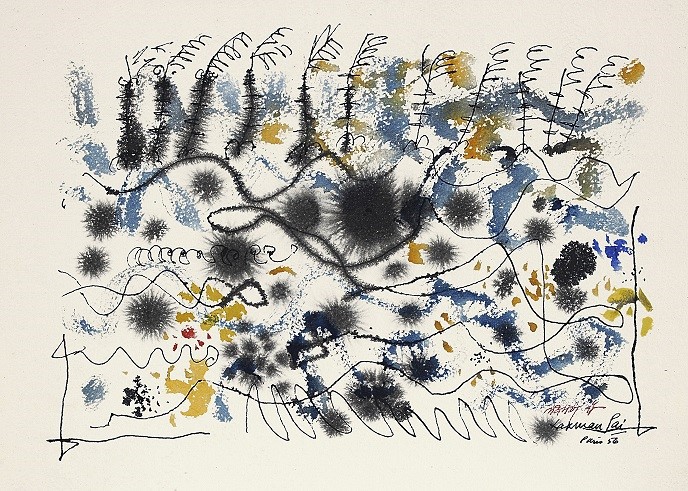
– Laxman Pai
[dropcap]E[/dropcap]mbracing Paris and the French connection was also a way for Indian artists to reclaim their own selfhood and reject colonialism. In her essay ‘Artistic Exchanges’ Devika Singh notes “one of the characteristics of Paris is that it had nurtured the avant-garde movements shunned by colonial art education and whose legacy Indian artists claimed – knowing that art schools often remained, even after 1947, the inheritors of colonial curricula. In reaction to this outdated formation, Indian artists decided to turn to Paris, London and later New York. Paradoxically , an artist could emancipate him or herself from colonial education and artistic thought processes by reclaiming not only Indian artistic developments but also those of Paris. In this context, embracing European movements partook of an agenda of cultural decolonization.”
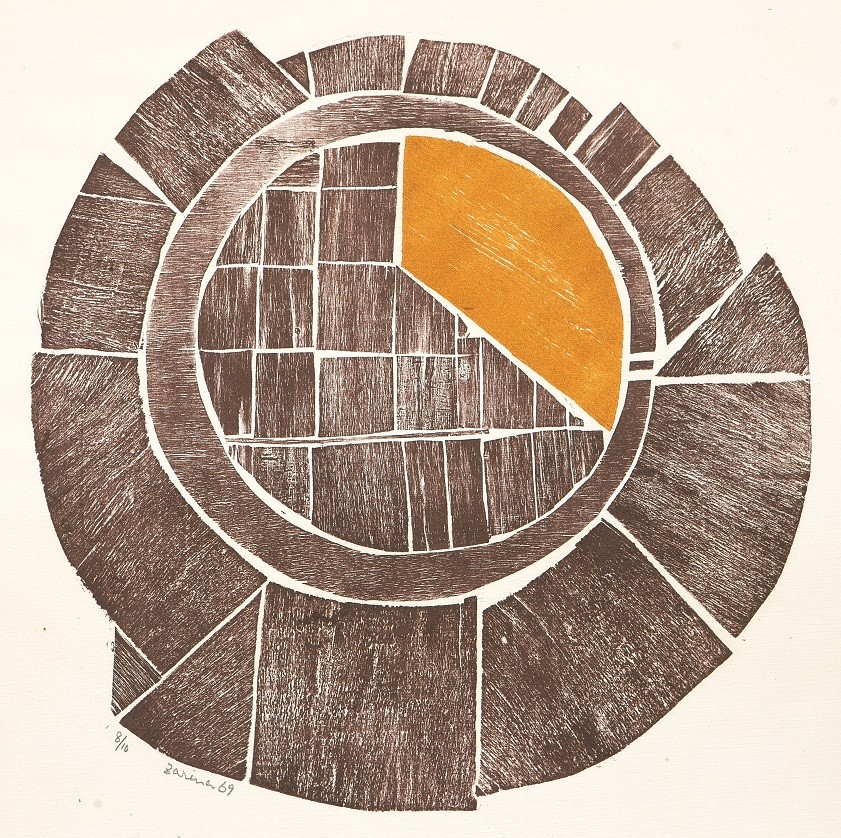
[dropcap]S[/dropcap]ingh writes also of the French encounters of Nalini Malani who came to Paris in 1970: “For Malani, Paris became a place of political awakening where she elaborated a critical thinking on the postcolonial condition and on feminism. Malani recalls the meeting places of the pro-Algerian Left, such as Francois Maspero’s Joie de lie bookstore. In Paris she encountered Jean-Paul Sartre and Simone de Beauvoir, attended the lectures of Louis Althusser and Claude Levi-Strauss at the Sorbonne, and met with Jean-Luc Godard, Alain Resnais and Chris Marker at the Cinematheque Francaise.”
She further concludes that the process of intensified contacts in the visual arts and architecture between France and India “ belongs to a time of nation building that was profoundly international not only in terms of exchanges but also of its world view and imaginaries.”
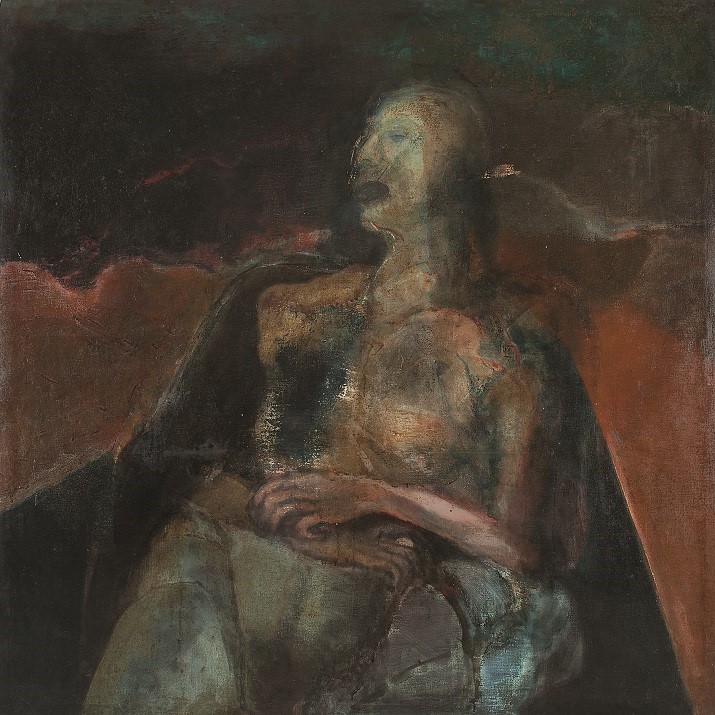
[dropcap]S[/dropcap]o how have these Indian artists been treated by France. Have they been remembered – or forgotten? In his fascinating essay on Indian artists in France, Kishore Singh writes, “Amrita Sher-Gill represented the zeitgeist of Paris, wearing its glamor like a cloak. And yet, on her hundredth anniversary, it was Hungary (one-half of her ancestry) that claimed her rather than the French, who have remained strangely insular to the successful Indian artists who have variously lived and worked in Paris.”
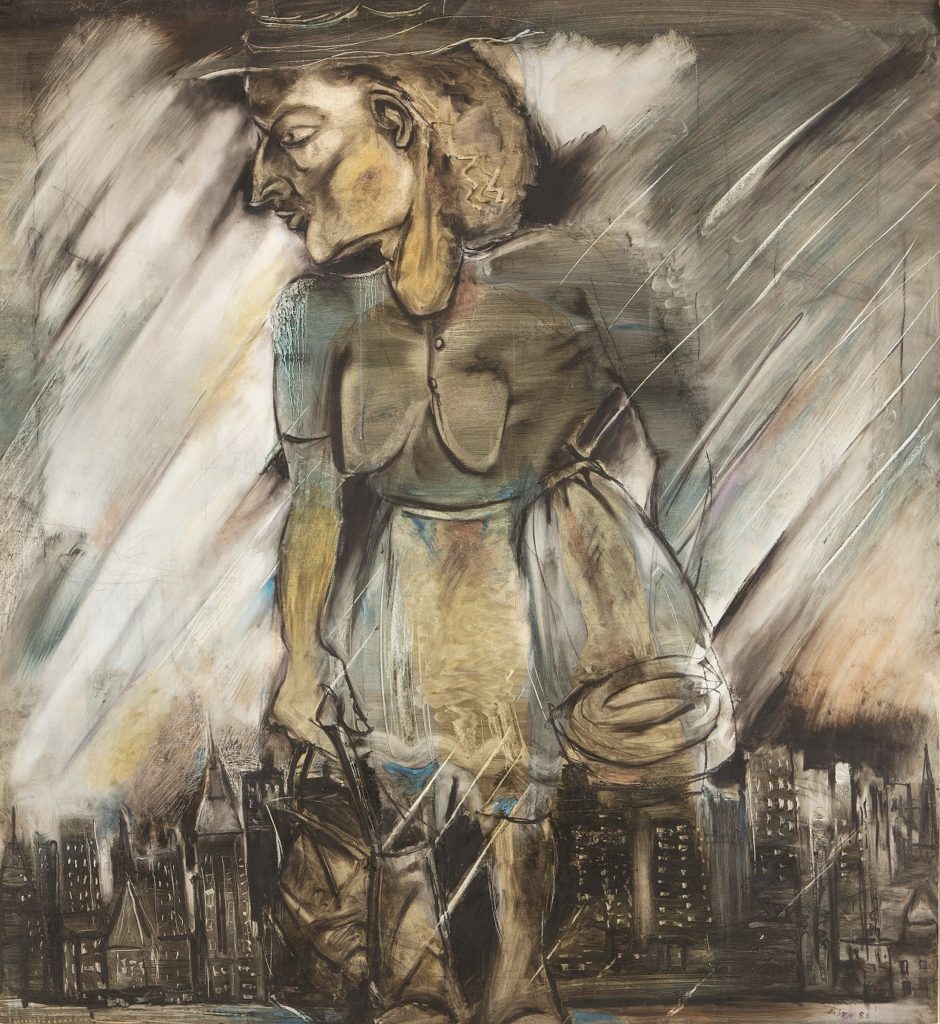
[dropcap]H[/dropcap]e points out that Raza, arguably the most celebrated and successful of the Indian artists in France has never made it to any lists of artists in France. He writes, “Several of them – Raza, Sakti Burman, V. Viswanadhan – though married to French women, have never been recognized as ‘French’ artists. And yet, it has had no such concerns in claiming the Spaniard Picasso as its own, as also the Dutch Vincent van Gogh or the German Max Ernst.”
The effects of these French journeys are far reaching and have continued to inspire and influence countless young Indian artists through the work of these noted modern artists whose work colored the social and political life of India.
Fortunately this exhibition is on through May 25, 2019 at DAG in Manhattan, so art lovers can wander the galleries, view the paintings and sculptures for themselves and learn more about this Indian-French love affair which continues to this day with a whole new range of young artists seeking inspiration in Paris.
Related articles
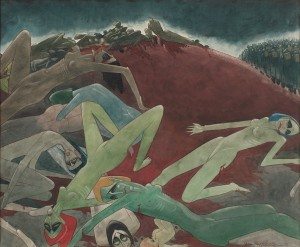

6 Comments
Good advice, Rishi Gupta!!
Rishi Gupta via Linkedin
It’s wonderful. Go see this show.
I’m sure you’ll love it, Damu! It has so many different layers to it.
Damyanti Radheswar via LinkedIn
Bhagwan Kapoor, one of this generation, lives in New York. I plan to see the show tomorrow. Thank you Lavina.
Hi Maya, yes this is a unique show – and since you love France so much, you will definitely enjoy it!
Fascinating, great article and art!! Will definitley try to catch it. Thanks